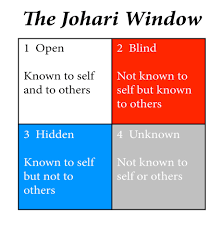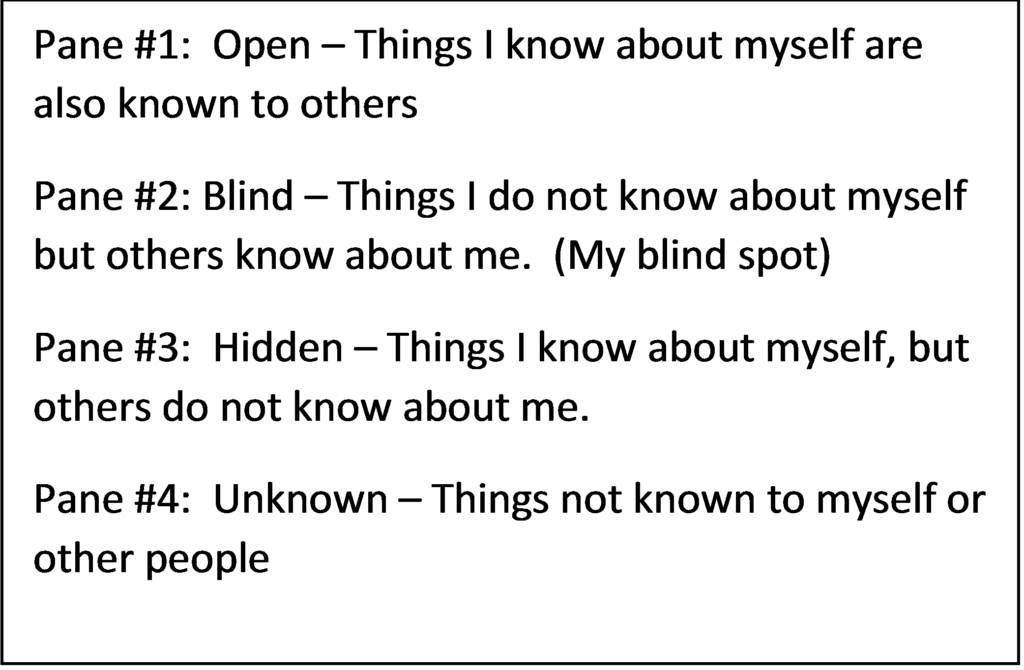
YOUR WINDOW ON THE WORLD
A tool I often discuss with clients is the Johari Window. The Johari Window was developed in 1955 by two psychologists (Luft & Ingham). The tool itself provides a perspective for helping people see themselves and others.
Although the model is over 60 years old now, it has stood the test of time in terms of how applicable and useful it remains. It continues to be used in Corporate America for teamwork exercises.
I learned about this window over 30 years ago in a Mass Communications class. It made an impression on me because it helped me acknowledge things about myself I had not considered before. For example, I did have a blind spot about how people were perceiving me. I often thought I was communicating accurately and precisely and found that people frequently misunderstood me. Through the hidden pane, I learned about the private part of myself that was necessary for my mental health and was too often taken for granted.
The “unknown” pane is that mysterious, miraculous part of ourselves that we learn about every day. The things that surprise us in terms of our reactions and behaviors – those unexplained aspects of unconsciousness.

